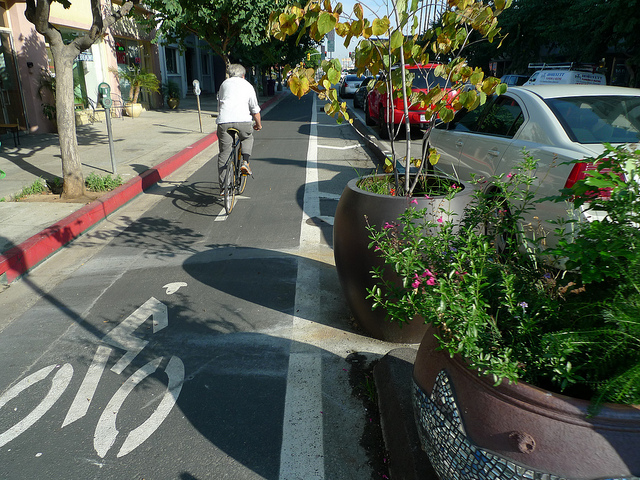- Cycling in context
- Comments on transport planning
- Opportunities for embedding walking and cycling
Hackney Cycling Conference, 2016-06-10, London, UK.

| City | Bike trips/per day | Replacement ratio | Reduction in car use per bike |
|---|---|---|---|
| Melbourne | 0.6 | 5.3 | 193 |
| Brisbane | 0.3 | 4.8 | 79 |
| Washington, D.C. | 3.0 | 14.3 | 247 |
| Minnesota | 0.9 | 5.3 | 135 |
| London | 3.1 | 50.0 | 79 |
\[ RR = \frac{\Delta Trips_{Cycled}}{-\Delta Trips_{Driven}} \]
Note: TfL's front page has a chairlift going through the centre!

Experimental: shows willingness to try things out
Cost effective: only £5 per metre
Clearly linked with other travel modes: 'stick and carrot'
Appeals to all types of cyclists and fits all types of pedal cycles




Propensity to cycle refers to the modelled uptake of cycling at area, desire line and route network levels under different scenarios of the future. Policy relevant scenarios include meeting national or local targets, the potential uptake if people in the study area cycled as much as the Dutch do or the impact of electric bikes on people's willingness to cycle longer distances. (see Get Britain Cycling article, 2016)
The tool aims to help prioritise where interventions are most needed based on where cyclable trips are most common

Source: The Conversation
Lovelace, Robin. 2016. "Mapping out the future of cycling." Get Britain Cycling, 2016. P. 22 - 24. Available from getbritaincycling.net
Gallagher, R., J. Parkin, R. Gallagher, and J. Parkin. 2014. “Planning for Cycling.” Report or Working Paper. http://www.ciht.org.uk/en/media-centre/news/index.cfm/ciht-launches-new-planning-for-cycling-guidelines.
Lovelace, R., S.B.M. Beck, M. Watson, and A. Wild. 2011. “Assessing the Energy Implications of Replacing Car Trips with Bicycle Trips in Sheffield, UK.” Energy Policy 39 (4): 2075–87. doi:10.1016/j.enpol.2011.01.051.
Lovelace, Robin, Anna Goodman, Rachel Aldred, Nikolai Berkoff, Ali Abbas, and James Woodcock. 2016. “The Propensity to Cycle Tool: An Open Source Online System for Sustainable Transport Planning.” ArXiv:1509.04425 [Cs]. http://arxiv.org/abs/1509.04425.